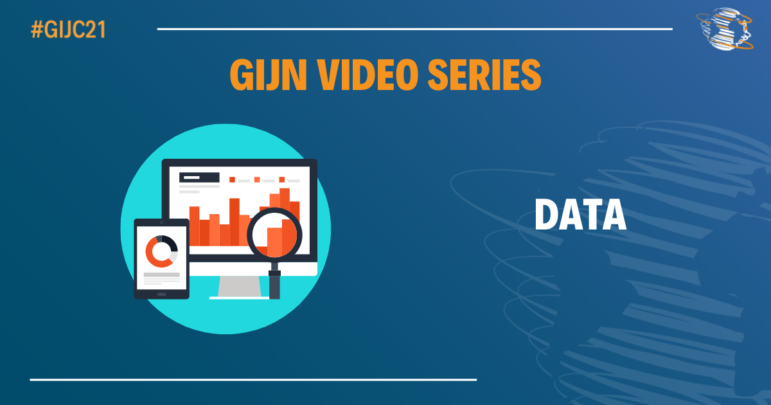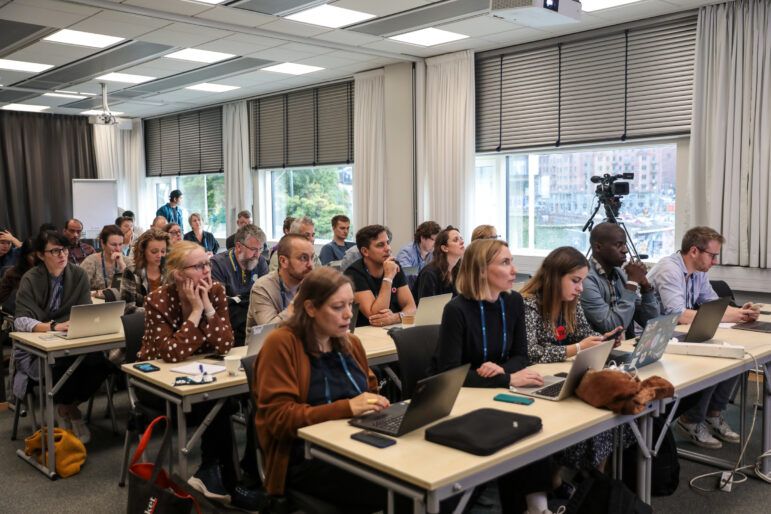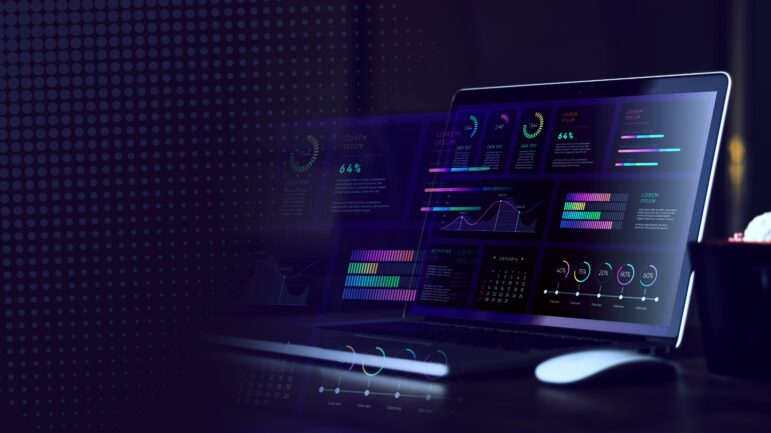

Image: GIJN/YouTube
Data-Driven Journalism: Roundup of Recent Standout Stories
Dozens of newsroom-led data-driven journalism projects have been produced in recent years. These stories highlight issues on global health, migration, inequalities, politics and environment, while also showcasing the latest trends and techniques in data journalism.
During a session at the 13th Global Investigative Journalism Conference (#GIJC23), Brant Houston, Knight Chair of Investigative and Enterprise Reporting at the University of Illinois, and Jennifer LaFleur, data editor at the Center for Public Integrity, reviewed some of these latest data investigations and what makes them unique.
“We’re looking back a couple of years trying to find examples of really excellent data-driven journalism, but also getting a variety,” Houston told the audience. “I think the biggest leap we’ve made in terms of data journalism has been in visualization, and you will just see how much visualization of data has happened.”
Houston noted that “the search for the magic number” is one common element in data investigations. “You get lots and lots of data and lots and lots of numbers and you are always looking for the one number that tells the story.”
LaFleur said that the best of modern data journalism tells powerful stories that test assumptions, are based on data that had to be mined from documents, and use satellite data to show patterns or uncover practices. In addition, she noted that many of the standout pieces also apply scientific techniques to reveal unseen patterns or expose misconduct.
Notable Case Studies
- The first data-driven story Houston and LaFleur reviewed was The Submerged City, from Amenaza Roboto, the only data and climate journalism site based in Uruguay. Published in November 2022, the story looked at sea level rise affecting the country’s capital, Montevideo, which is largely caused by climate change and flooding. The bilingual investigation (in Spanish and English) won the 2023 Sigma Award for best single project in the small outlet category.
- Another standout environmental and data investigation the pair highlighted was The Collapse of Insects. Published by Reuters one year ago, the story looked into how scientific research grappled with the unprecedented declining rate of the organisms. “I just love this one because it’s so lovely and it teaches me something I didn’t know,” LaFleur said. “The power that insects play in our world is kind of amazing to me.”
- An ARIJ-funded investigation by Samar Mohammad into forced evictions in Egypt was next on Brant and LaFleur’s list. This story used data to show trends in real estate expropriation orders and the people who lost their homes because the government was seizing their property.
- A Reuters investigation on bats and the risk from crossover infection humans was singled out as incredibly insightful and clearly relevant, because of the recent COVID-19 pandemic. “The graphics in this story are beautiful,” LaFleur said. “It’s about how bats can bring deadly viruses to human beings. It’s based on a pretty interesting analysis which was borrowed from scientists to show the areas where there is overlap between bats and people and how that can spread disease.”
- Another notable trend in data journalism is the increased ability to track forest fires and perform wildfire analysis. As an example, Houston reviewed a ProPublica data investigation that looked into smoke and air quality in central Florida in the US. There, sugar companies have repeatedly claimed that the air quality is safe despite apparent pollution resulting from the intentional burning of cane fields during harvest season. “It’s incredible pollution and incredibly dangerous to the people around it,” Houston explained. To test the sugar companies’ claims, he said that ProPublica “went ahead and monitored what the real safety was, which was none.” “That’s happening a lot more around the world with consulting with experts on it,” Houston added. “So, when you’re looking at datasets now, there’s a lot of combinations of things that are happening. There could be geographical data, there could be sensor data, and of course you’re using the geography data. So, this was just a terrific project.”
Data Search Tools and Resources
Houston and LaFleur mentioned a few search tools and resources where journalists and newsrooms can get national datasets.
- Tatu (Brazil) — Data portal for Brazil
- OCCRP’s Aleph — A data platform that brings together a vast archive of current and historic databases, documents, leaks and investigations.
- The Accountability Project — US project with almost two billion records and public data.
- ICIJ offshore leaks collections
- SIGMA Awards — The international data journalism awards.
- Data journalism top 10 from GIJN
- Philip Myers award from Investigative Reporters and Editors.
- Datajournalism.com
“The great thing about groups like this and these resources is sometimes you might want to do something that you think is impossible to do,” LaFleur said. “But someone else might have done something similar and they’re often willing to help you do it for your own story.”
Taking Data Journalism to the Next Level
Houston said whatever he learned in data journalism was because he wanted to apply it immediately to something else.
“One of the interesting things in the history of doing data-driven work, people got loyal to software,” he explained. “You just want to find the right tool for the right job and don’t make things overly complicated, and that’s kind of our approach to teaching all this too.”
LaFleur said databases are important, but that it’s important to understand that they are just a means to an end. That’s why, she said, she always tries to start an investigation with a thesis, asking herself questions like: What is the story? Who can I hold accountable? “If it’s a data story, how can I humanize it? And if I’ve got lots and lots of numbers, that is the best thing for the visualization and graphics,” she said.
Watch the full GIJC23 panel on Data-Driven Journalism: A Review of Recent Stories.









